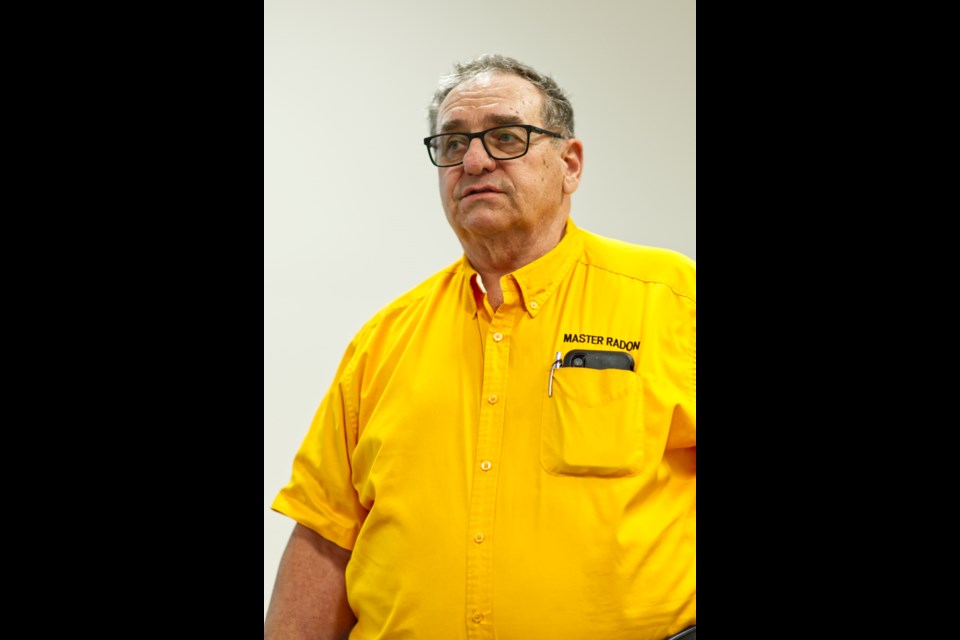ASSINIBOIA – It’s invisible, tasteless, odourless, the leading cause of lung cancer in non-smokers, and we’ve all been exposed to it. Radon is a gas formed from the breakdown of uranium and other natural organic materials found underground. With a higher pressure than the air we breathe, it often seeps up through basements and into our homes.
“Everyone is exposed to radon at some level throughout their lives. The concern is high levels in homes, schools, and workplaces,” said Frank Kirkpatrick, a certified radon professional and owner of Master Radon in Regina. He was in Assiniboia recently to host a public information meeting and urge residents to test their homes.
Radon gas is a heightened issue in southwest Saskatchewan with an estimated 33 per cent of homes in this region testing over what Health Canada considers a harmful level.
“One in three houses in southern Saskatchewan are testing higher than 200 Bq/m3 of radon,” Kirkpatrick said, adding that Regina is actually a global hotspot with 50 per cent of buildings exceeding that benchmark.
“We’ve had it forever, but we don’t build our houses as tight as we do now,” said Kirkpatrick, pointing to new building methods and certain types of ground disturbance as contributing factors to the increased occurrences. Other factors for higher radon readings include time of year, cracks in basement floors and foundations, and even how often people open windows or use fans.
Fortunately, repairing the issue is not overly costly. The first step is to test the level of radon in your home using either a passive single-use test requiring three months of data collection before being sent to a lab, or by using a continuous monitor. The benefit of the latter is faster results, they’re reusable and can be used short or long-term.
When a building is deemed to have high levels of radon, Kirkpatrick explained general remediation measures. The basic process involves giving the radon a lower, more desirable point to migrate - often involving the installation of a fan - and controlling how the gas enters the atmosphere outside of the house.
“We’ve been all through this area fixing houses,” Kirkpatrick said, noting most repairs fall into the $3,500 range. Compared to the damaging health effects, it seems like a small price to pay.
“Radon is the second leading cause of lung cancer,” he noted. “It is the leading cause of lung cancer in people who’ve never smoked.”
Winter is the season with elevated radon readings detected, hence Kirkpatrick’s timely presentation, spreading the message of prevention.



